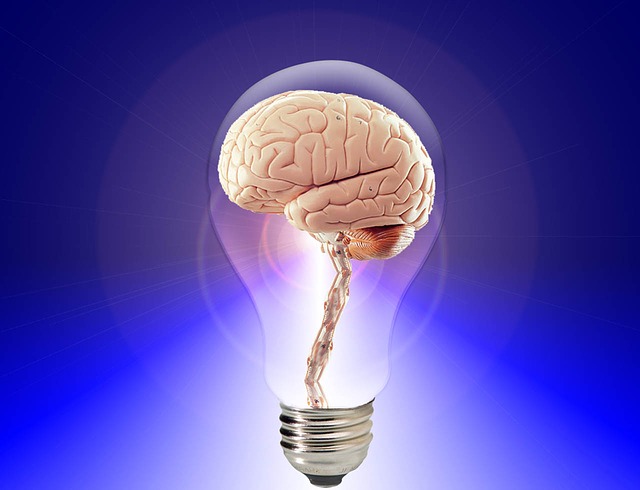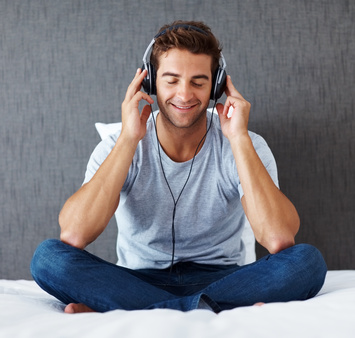
by Peter Winslow
In order to feel my best I find it helpful to think of healing not in terms of medical science, but as a natural philosophy.
Philosophy means the love and pursuit of wisdom. The philosophy of healing entails a deeper experience of inner wisdom, and the awareness of an aspect of mind and body that protects us and keeps us well.
I know it can be difficult or controversial for some to think of healing this way. Some people just don’t buy the idea of a meaningful connection between the mind and the body. This may be due in part to the fact that western medical schools do not promote mind-body approaches to treatment.
For years, these schools taught their students that the mind had little or no effect at all on the body. They believed that something as nebulous as stress, which is a mental and emotional state, couldn’t possibly affect the complex anatomy and chemistry of a human being.
Many prominent medical professionals have admitted that they just didn’t see how it could be that simple. Now, many practitioners are changing their beliefs and practices to include mind-body protocols for stress relief as they recognize the benefits of these powerful techniques.
It is interesting to note that when we speak of healing, we’re talking about something that can’t be accurately quantified by scientific control groups and empirical data. Statistics for it are uncertain and variable; our practitioners are at best able to state the probabilities for any particular outcome.
The healing essence within you is rarely discussed in western medicine. They are focused on the physical sciences that govern matter and molecules, the tissues they can observe with the tools of technology. They discover ways to interact with those materials and they translate their findings into methods of treatment.
Healing on the other hand, is what you do. You own the healing essence free and clear; the doctor doesn’t prescribe it and nobody can sell it to you. As such, healing is something that ultimately depends upon the individual.
The power of healing is with you now and it will never leave until you die and your body no longer needs it. Cut the finger on a cadaver and the wound cannot heal. Why not? The healing essence has departed the body along with the life force. At this point, no amount of medical treatment will make any difference.
This means that the healing essence in living tissue is linked to the source of life within us. It has never been conclusively defined by medical science or agreed upon by world cultures, and the essence that does the healing in our bodies hasn’t been seen under a microscope. That’s why mechanical medicine can’t focus on it directly.
To maximize healing, we must be willing to incorporate the linear left-brain treatments of modern science with the right-brain mind-body functions of attitude and philosophy. In doing so, we can expect far-reaching results that rise above and go beyond the expectations of either option alone.
Next time we’ll discuss your healing presence, and how internal beliefs affect it.
Peter

by Peter Winslow
What makes us sick, and who, or what, can make us well?
In a very real sense, our thoughts and emotions hold the key.
Think about it—when you suppress your guilt, shame, anger, resentment, and other negative emotions… can they make you sick? Recent medical findings overwhelmingly conclude that in fact, they do.
We now know beyond a shadow of doubt that toxic emotions significantly compromise immune function, the internal defense system that helps to protect us from premature aging and disease.
This is the mind-body connection in action. It’s a natural phenomenon that surprisingly, many people still cannot grasp. Yet studies continue to prove that what you think and feel very definitely impacts your health, especially when what you think and feel causes stress.
Today, stress and stress-related illnesses account for the overwhelming majority of complaints that patients in the U.S. report to their doctors. Here’s an example you may be familiar with:
Studies show that mental stress can disrupt the normal function of the human digestive system. Mental and emotional stress can create loss of appetite or ravenous eating binges, and alter the proper absorption of nutrients. Mental stress is also cited as causing a host of problems with elimination and excretion of waste.
This is hard evidence that mental stress causes symptoms in the physical body. Is there anyone reading this post who is still unsure about that?
Your doctor knows that alleviating the mental stress that causes the problems will usually result in restoration of proper bodily function. The doctor often prescribes medications for treatment, but there are other options available, and many without harmful side-effects.
For example, moderate exercise goes a long way toward neutralizing the havoc that troubling emotions wreak on your health and longevity. There are also a variety of easy mind-body techniques and self-treatments you can use to help heal your body and add years to your life.
The incredible thing is, you don’t have to know how the mind-body connection works to get great results. Think of it this way: you don’t need to know how to manufacture a Ferrari to start one up and drive it away, do you?
The automobile—your body—has been designed and built to function smoothly. Your job is to get into the driver’s seat and steer your body toward wellness.
Again, you don’t need to understand the mind-body connection to use it productively. Consider this: how does your body digest and assimilate what you eat and then eliminate the waste without you even knowing how it works?
The answer is that you don’t have to know because the work is done by an instinctive “inner intelligence.” Call it what you want—nature, instinct, higher awareness—it’s there right now, directing your bodily functions without you paying any attention to it.
But what’s fascinating is that your inner intelligence pays close attention to you. It constantly responds to your thoughts and emotions, and for better or worse, you are communicating with it all the time.
Let’s use this information to get a better understanding of what healing is. Your inner intelligence directs a complex healing system that constantly moves you into balance with the environment. It is beautifully designed to take you in the direction of proper bodily function, tissue repair and rejuvenation, regardless of your circumstances.
For instance, if you cut your finger, you can watch as the wound seals itself back together over time, without you having to do anything at all. It’s a routine job for the healing intelligence within you. This remarkable asset is ever vigilant, always at work in you and through you regardless of the medical treatments you take.
A fundamental tool of survival, the mechanism we call “healing” exists in all forms of life on the planet, both plant and animal. By looking at the healing essence from this perspective, you open yourself to a larger and richer concept of what true and total healing really means.
Drop your limiting beliefs, expand your awareness and begin to think of the healing essence within you as a form of higher consciousness. It’s an inner intelligence that literally watches over you with an intention of good health and wellness.
It’s the spirit that directs an incredibly complex and delicate balance of the physical and subtle energy systems in your body that maintain intricate relationships with each other and work together for the greater good of the whole organism—you.
Now let’s capitalize on this information. Your part in directing the mind-body connection for positive results is first to determine what outcome you’d like to experience. Then you will learn to believe and behave in accordance with that outcome, and observe with confidence as the body follows the mind.
Let’s begin by meditating on this quote from Norman Cousins, the famous writer who healed from Ankylosing Spondylitis: “The personal belief system is often the activator for the healing system.”
You’d better believe it.
Peter

by Peter Winslow
Working with a client recently, I had the opportunity to share this incredible insight:
Nothing is ever a problem, until you say it is.
That means there can be no such thing as a problem, ever.
That is, there can be no such thing as a problem until you declare it so.
“Problem” is simply a label we put on a situation to deny acceptance of it. So, if your car transmission goes on the fritz, you might just decide that’s a problem.
The mechanic you take it to will probably see it differently. To the mechanic, it’s an opportunity. He’s likely to say, “Broken transmission? No problem.”
One person’s “problem” can be another person’s fortune—and acceptance of the situation is the determining factor for satisfaction and prosperity, or struggle and strife.
Even Albert Einstein once said that you cannot fix a problem with the same mind that created it. He meant that to produce a desired outcome, we’ve got to shift out of the “problem” mindset and into a positive state of being.
In his book The Power of Now, Eckhart Tolle writes that we create and even maintain our “problems” because they provide us with a sense of identity. This may well explain why some people hold on to old pain and suffering far beyond its ability to serve them.
Humans are, as far as we know, the only animals who persecute themselves by replaying their past mistakes over and over again in their minds. We continually punish ourselves by allowing feelings of shame and regret to shape our feelings and actions in the present moment. It goes something like: “This is who I am and who I intend to be until further notice.”
Others cling to frustration and worry about the future, as if this somehow gives them power; it really only makes them ill. Many hold stress in their minds and bodies, creating serious health issues, and eventually come to accept that state of disease as “normal” or genetic.
When my pain was at its most crippling, I thought AS was the worst thing that ever happened to me. It really did seem to be a towering and undeniable problem. Now I clearly see how it provided me with a hidden opportunity for shaming and blaming myself, and there was no resolution or recovery from there.
Yet when I shifted out of the “problem” mentality, my dis-ease opened a door to dynamic personal growth, which for me evolved into true and total healing.
A remarkable transformation can occur in almost anyone who honestly focuses on what they can gain from their challenges. It sounds simple, but this ancient advice says it all:
“If you let go a little, you will have a little peace. If you let go a lot, you will have a lot of peace.”
In every moment of your life there is a chance to let go of pain and suffering. In the coming weeks I will share with you how to release pain, frustration, anger and stress from your life. Here are a few basic points to get you started:
How to Let Go of Frustration
- Change your perception and determine that your “problems” are opportunities in disguise.
- Channel your discontents into immediate positive actions. Read that inspirational book on your shelf, listen to uplifting music or choose another activity that empowers you.
- Use meditation or yoga to bring you into the present moment instead of dwelling on the past or worrying about the future.
- Make a list of your accomplishments—including the small ones—and add to it daily. This causes you to let go of discontentment in order to make space for self-satisfaction.
- Visualize a box in your head labeled “Expectations.” Whenever you catch yourself dwelling on how things should or shouldn’t be, mentally shelve those thoughts in the box and leave them alone.
- Let go of wasting time and energy on what you do not control. Instead, express your feelings through a creative outlet like blogging or painting. This creates a visual reminder that you have actively chosen to release hurtful feelings.
- Engage in a physical activity at least once a day. Exercise decreases stress and increases endorphins and other chemicals that improve your state of mind.
Choose the items that make the most sense to you right now, and use them. You will soon discover that these small steps can make a huge and powerful impact in your life.
To your lasting success –
Peter

by Peter Winslow
Recently, I was working with a client who has Ankylosing Spondylitis. The discussion came to a standstill as she experienced a life-altering epiphany, or what some call an “aha” moment.
We were discussing how ridding the body of stress can reduce chronic pain and muscle spasms. She understood the principle but hadn’t quite grasped the influence that stress had in her life.
She was describing a scenario when her symptoms were at their absolute worst. It was a time when she faced a very difficult set of challenges concerning her relationship with a close family member.
As she described that episode, she abruptly came to a screeching halt mid-sentence—and fully realized that stress was clearly exacerbating her illness and devastating her sense of well-being.
She was not one to connect stress or troubling thoughts with her disease, but now she knew stress was indeed a primary issue. It was almost always accompanied by painful flare-ups and other symptoms of Ankylosing Spondylitis, a chronic and degenerative autoimmune disorder.
She came to understand that suppressing her stressful issues of guilt, anger, resentment, and other negative emotions was wreaking havoc and keeping her sick. Aha!
In fact, stress relief is a primary key to healing. That’s why your doctor always recommends you get plenty of rest when recovering from illness or injury.
Stress relief is one of the primary strategies I used to recover from the symptoms of Ankylosing Spondylitis. The troubling and toxic emotions I lived with for many years took a huge toll on my body, but when I cleared those issues out, my body quickly responded with renewed health and healing.
Have you experienced a similar situation? Was there an “aha” event that made a powerful impact in your life? These moments of inspiration and clarity can really change things. Be on the lookout for them, and give them your full attention when they appear. Then be sure to share them with others who will benefit from the message.
Peter

by Peter Winslow
Each individual has the ability to improve his or her health. One way to do it is by tapping into your own resources. There are many tools to access these inner resources and enhance your life with greater health, happiness and harmony.
Periodically, I like to share some of the recent scientific studies I see in this area. I hope you find them inspiring!
Through the Center For Mind-Body Medicine eighty-two high school students in Kosovo participated in a randomized-controlled study which concluded that “…all students had experienced post traumatic stress, flashbacks, nightmares, and symptoms of withdrawal and numbing in the war-torn area of Kosovo where 90% of the homes were burned and bombed and 20% of the children lost one or both parents.” The small group settings used meditation, guided imagery, breathing techniques and biofeedback as well as self-expression through words, drawings, and movement. Following the program, the number of students having symptoms indicating post traumatic stress disorder was significantly reduced from 100% to 18%.
Johns Hopkins Center for Complementary and Alternative Medicine (“CAM”) reported in a survey the following statistics relating to the use of complementary and alternative therapies (referred to as “CAM”):
- “40% of Americans use some form of complementary or alternative therapy for chronic conditions;
- CAM was most frequently used for pain control, and nearly 50% reported using CAM because their prescribed medications were ineffective;
- more than half of these patients used dietary supplements or herbal therapies, and almost two-thirds of the patients found CAM to be helpful; and
- 30% to 70% of cancer patients who are inadequately treated by their physicians turn to CAM in the hope of curing or alleviating their pain.”
Also supporting the use of complimentary and alternative therapies is a study of 23,000 adults by the National Institute of Health’s National Center for Complementary and Alternative Medicine. See the study.
Study on Aging by Harvard Psychologist Ellen Langer concluded that thoughts about how old you are affect how old or young you feel and how your body responds, as reported in Newsweek. Subjects were put into an environment to simulate living 20 years ago; the participants actually felt as if their age had been turned back two decades. Outside observers noted that the subjects appeared to be younger and healthier than they were before the experiment.
The Johns Hopkins Medicine and Digestive Center reports the following excerpts from a summary of integrative psychotherapy:
“We know that our minds can quickly jump to worst-case scenarios, worry, and self-defeating behaviors. We can feel overwhelmed… these thought patterns can lead to illness … as patients come to understand what triggers their pain, anxiousness… old patterns lose their hold… enabling changes… to move beyond prior limitations of thought and attitude.” Read entire article.
Note: By providing links to other sites, the AS Victors Club does not endorse, approve or guarantee any of the products or the information available from those sites.

by Peter Winslow
It sounds like some magical, mystical practice: Creative visualization. Who really uses this stuff?
Well—you do.
Creative visualization simply means using your imagination to create with. There is nothing odd or unusual about it; in fact, everyone uses visualization and imagery every minute of every day. It is nothing more than the ability to have an idea or create a mental picture in your mind.
The good news is you can use this miraculous mental skill to empower yourself for success with your goals and dreams. How?
What at first seems challenging, improbable or even impossible becomes practical and understandable when we use imagery and visualization effectively. Let me explain.
If you had never seen a beautiful, awe-inspiring sunset and someone tried to describe one to you, it would seem unlikely, miraculous or even outlandish. But once you had seen a few for yourself and learned about the natural laws that create them, it would seem completely normal.
That is the power of visualization.
Creating anything always begins with a thought or idea, and that idea becomes the blueprint which precedes what we experience. “I think I’ll have lunch” is the thought that comes before the meal; “I need a job” is a thought that may eventually lead to one.
That same mental principle operates even when we do not take direct action on it. Simply holding the idea or thought in your mind is enough to create the beliefs and behaviors that support it.
Because of their dominant fears and painful emotions, people use the skill of creative visualization against themselves, and you have probably done it yourself from time to time.
The fact is, people often worry about their situations or circumstances, which is a form of creative visualization. Worriers create images in their minds of what they fear, however briefly, and these images and thoughts get planted into the subconscious mind where they are then acted upon.
If you constantly think about illness, you can make yourself sick. If you truly acknowledge your inner beauty, you’ll develop more of it. If you see yourself healing and growing, that’s the direction in which you move. In this way we create our internal feelings, and determine just how we will experience them in the world around us.
Peter






